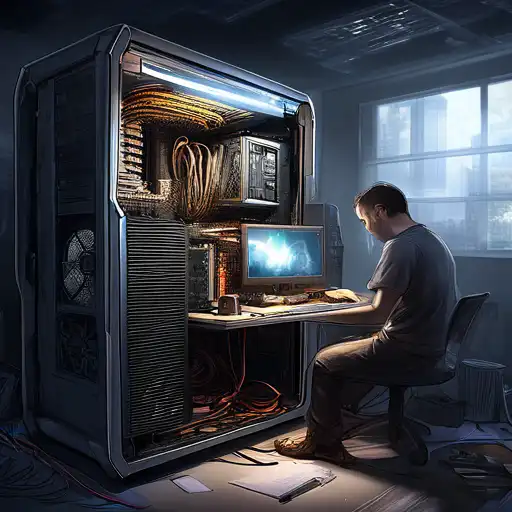Introduction to PC Building
Building your own PC can be a rewarding experience, offering both personal satisfaction and the opportunity to create a machine that perfectly fits your needs. Whether you're a gamer, a content creator, or just looking for a powerful workstation, assembling your own computer allows for customization that pre-built systems can't match.
Understanding the Basics
Before diving into the assembly process, it's crucial to understand the core components of a PC. These include the CPU (Central Processing Unit), GPU (Graphics Processing Unit), motherboard, RAM (Random Access Memory), storage (SSD or HDD), power supply, and case. Each component plays a vital role in the system's overall performance.
Choosing the Right Components
Selecting the right parts is the first step in building a PC. Consider your budget and what you'll be using the PC for. For gaming, invest in a powerful GPU. For tasks like video editing, prioritize a high-performance CPU and ample RAM. Compatibility is key, so ensure all components are compatible with your motherboard.
Step-by-Step Assembly Guide
- Prepare Your Workspace: Ensure you have a clean, static-free area to work in.
- Install the CPU: Carefully place the CPU into the motherboard's socket, following the manufacturer's instructions.
- Install the RAM: Insert the RAM sticks into the appropriate slots on the motherboard.
- Mount the Motherboard: Secure the motherboard inside the case using the provided screws.
- Install the Storage: Connect your SSD or HDD to the motherboard and power supply.
- Install the GPU: Place the graphics card into the PCIe slot on the motherboard.
- Connect the Power Supply: Attach all necessary power cables to the motherboard, GPU, and storage devices.
- Final Checks: Ensure all components are securely installed and cables are properly connected before powering on the system.
Installing the Operating System
Once your PC is assembled, the next step is installing an operating system (OS). Windows is the most popular choice for gaming and general use, but Linux is a great free alternative. You'll need a USB drive with the OS installation files to proceed.
Optimizing Your PC
After installing the OS, optimize your PC by updating drivers, installing essential software, and adjusting settings for peak performance. Regular maintenance, such as cleaning dust from components and updating software, will keep your system running smoothly.
Conclusion
Building a PC may seem daunting at first, but with the right preparation and guidance, it's an achievable project for beginners. Not only does it offer a deeper understanding of how computers work, but it also provides a sense of accomplishment. Ready to start your PC building journey? Check out our component guide for more detailed information on selecting parts.
